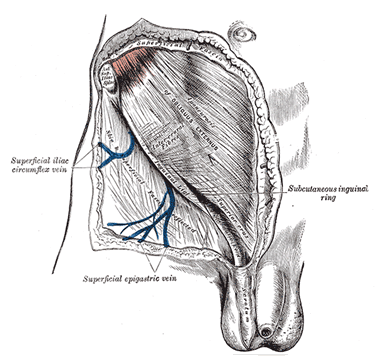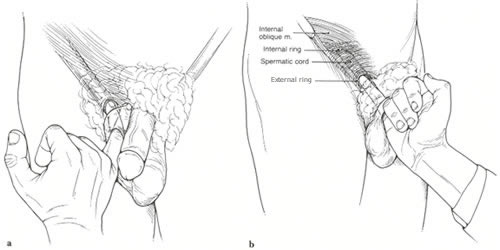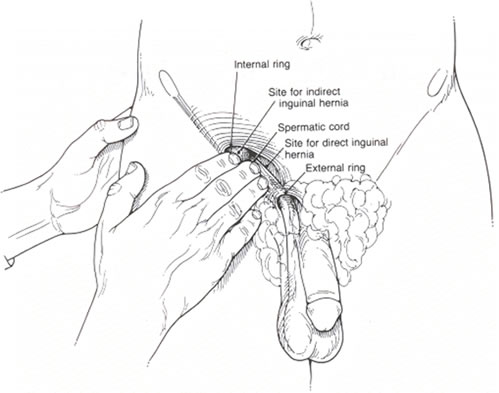Physical Exam
*This page contains men’s anatomy photos.*
A Physical Exam Accurately Diagnoses a Sports Hernia
A complete history and physical examination are still the most important steps to determine the etiology of an athlete’s groin pain. 90% of the time, a diagnosis can be made with the history and physical examination alone. A rushed or inadequate physical examination is the most common cause of a missed diagnosis.
The British Hernia Society stated that an Athlete has a Sports Hernia if at least three out of the five clinical signs below are detectable:
- Pinpoint tenderness over the pubic tubercle at the point of insertion of the conjoint tendon;
- Palpable tenderness over the deep inguinal ring;
- Pain and/or dilation of the external ring with no palpable hernia
- Pain at the origin of the adductor longus tendon; and
- Dull, diffused pain in the groin, often radiating to the perineum and inner thigh or across the midline.
MRI, CT scan, Ultrasound are used to try to image the tear in the oblique muscles. Unfortunately, the tests can be challenging to interpret, and there is a high false-negative rate. Imaging tests are mainly helpful in identifying other possible etiologies of the groin pain, for example, a hip injury.
The physical examination must include the abdomen, the groin, the nerves, the pelvis, the adductor tendons, the hip, the spermatic cord and testicles in men, and the round ligament in women.

A patient with a Sports Hernia will have an enlarged external inguinal ring secondary to a tear of the external oblique fascia. The external ring can be palpated by inverting the scrotum with the finger. Usually, only the tip of the finger can be inserted into the external inguinal ring. In cases of a Sports Hernia, a finger easily passes through the external inguinal ring. The palpation of the external inguinal ring will often reproduce the patient’s pain. Often the floor of the inguinal canal can be palpated, and the thickness and strength have to be compared to the contralateral side. A thin and weak inguinal floor is also characteristic of a Sports Hernia.

Another essential part of the examination is palpation of the external oblique as it runs parallel to the inguinal ligament. Often a defect can be palpated. A defect in the external oblique fascia is consistent with a Sports Hernia.

Learn more about Dr. Nguyen’s approach to the treatment of sports hernias or contact Dr. Nguyen for additional information.
Contact Us
M-F 9am – 5pm
15965 Los Gatos Blvd. Suite 201
Los Gatos, CA 95032
PHONE: 408.358.1855
FAX: 408.356.4183
